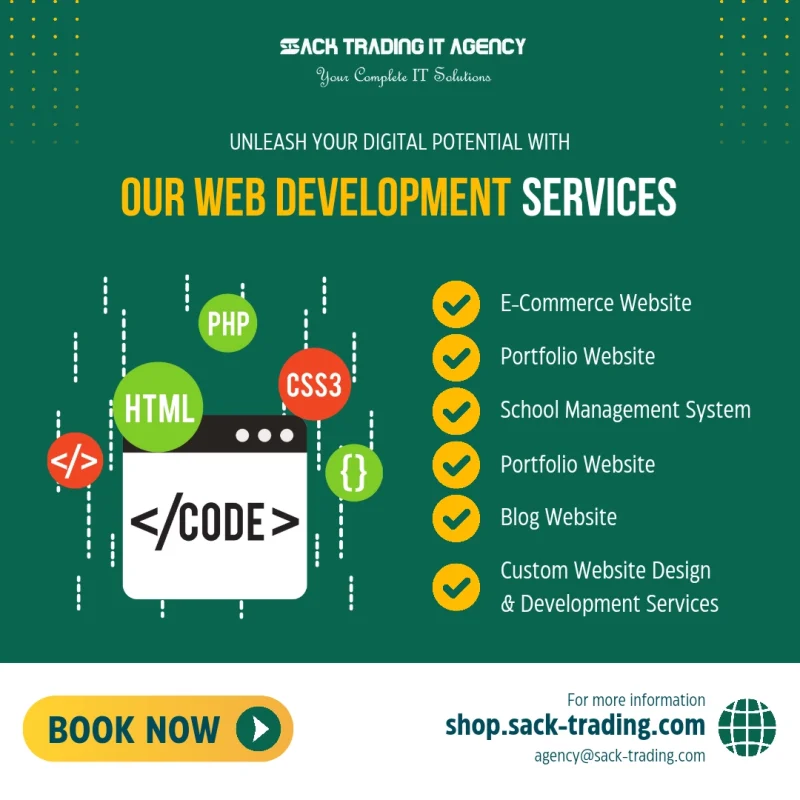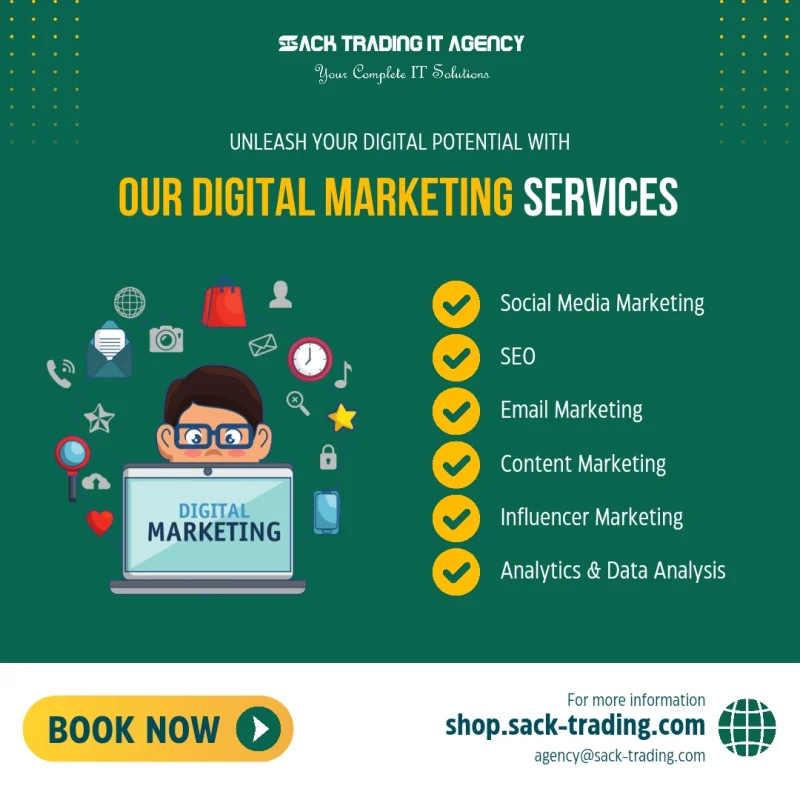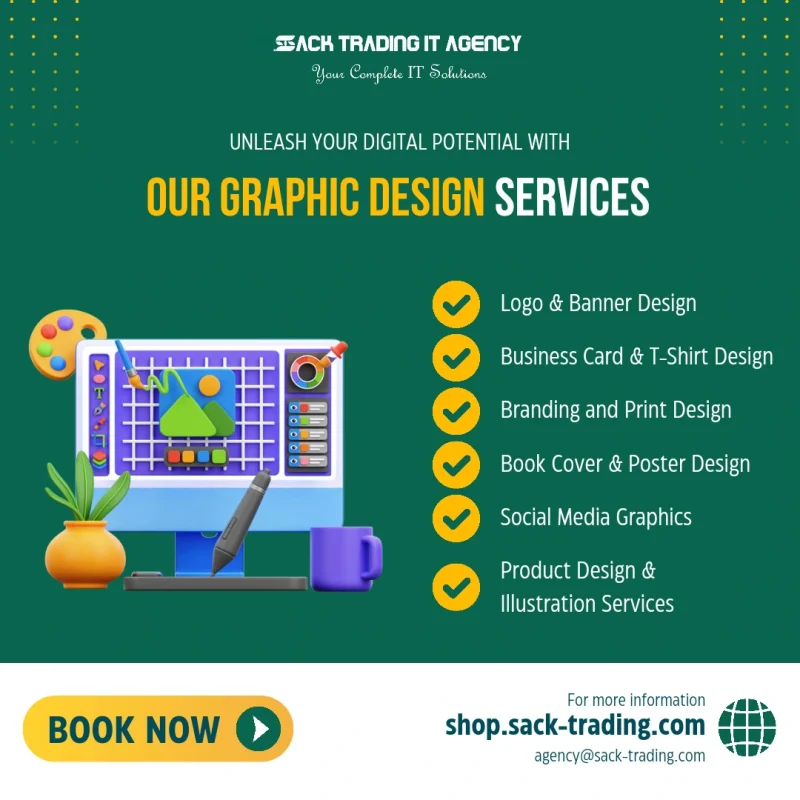Web Development
Web development is the art and science of crafting the virtual world we navigate every day. It’s the process of designing, creating, and maintaining websites and web applications, transforming abstract ideas into tangible digital experiences. Here’s a comprehensive description:
Web Development: Building the Digital Universe
Web development is the creative process of constructing the online landscape we all inhabit, shaping the virtual world in which we live, work, and play. It involves the expert use of programming languages, design principles, and technical skills to transform concepts and vision into interactive, user-friendly websites and applications.
Key Elements of Web Development:
Front-End Development: This aspect focuses on what users see and interact with on a website. It’s about creating the visual and interactive elements of a site. Front-end developers use languages like HTML, CSS, and JavaScript to build the user interface, ensuring a seamless and engaging user experience.

- Back-End Development: Behind the scenes, back-end developers work on the server-side of a website or application. They handle databases, server configurations, and ensure that the functionality of the website runs smoothly. Programming languages like Python, Ruby, and PHP are often used in back-end development.
Full-Stack Development: Full-stack developers are the versatile virtuosos of web development. They master both front-end and back-end technologies, ensuring a comprehensive and unified user experience. They play a crucial role in bringing all aspects of a website together into a cohesive whole.
Web Design: The aesthetics and layout of a website are essential for capturing the user’s attention and creating a memorable experience. Web designers combine artistic skills with a deep understanding of user behavior and accessibility to create visually stunning and user-friendly designs.
Responsive and Mobile Development: With the proliferation of mobile devices, ensuring that websites function seamlessly across various screen sizes is paramount. Responsive and mobile developers adapt web content and functionality for an optimal user experience on smartphones and tablets.
Content Management Systems (CMS): CMS developers work on platforms like WordPress, Drupal, or Joomla, which allow users to manage and update website content easily. These systems provide flexibility and scalability for website owners.
E-Commerce Development: E-commerce developers specialize in creating online stores and marketplaces. They handle payment gateways, product catalogs, and secure transactions to facilitate online shopping.
Web Security: In an era of increasing cyber threats, web security experts ensure that websites and applications are protected from vulnerabilities and potential breaches, safeguarding user data and maintaining trust.
Web Performance Optimization: Web developers focus on enhancing website speed, optimizing code, and improving overall performance. This results in faster loading times and a smoother user experience.
Web development is a dynamic field, constantly evolving to keep pace with the latest technologies and user expectations. It requires a blend of technical expertise, creative thinking, and problem-solving skills to bring digital visions to life. Web developers are the architects, artists, and engineers of the online world, shaping the internet’s evolution and making it a more vibrant and functional space for all.
Digital Marketing
Digital marketing is a multifaceted and dynamic field that encompasses various online strategies and tactics to promote products, services, or brands to a global audience. It leverages the power of the internet and digital channels to reach and engage potential customers, build brand awareness, drive website traffic, and ultimately, boost sales and revenue. Here’s a detailed description of digital marketing:
Digital marketing encompasses a wide range of online marketing activities designed to connect businesses with their target audience in the digital realm. This includes:
Search Engine Optimization (SEO): SEO involves optimizing a website’s content and structure to improve its visibility on search engines like Google. The goal is to increase organic (non-paid) traffic and improve search engine rankings.
Content Marketing: Content marketing focuses on creating and sharing valuable, relevant, and consistent content to attract and engage a target audience. This content can include blog posts, articles, videos, infographics, and more.

Social Media Marketing: This involves leveraging various social media platforms like Facebook, Instagram, Twitter, and LinkedIn to connect with the target audience, build a brand presence, and engage in two-way communication.
Email Marketing: Email marketing uses email campaigns to nurture leads, inform customers about products or services, and maintain customer relationships.
Pay-Per-Click (PPC) Advertising: PPC advertising, such as Google Ads, allows businesses to display ads in search engine results and on other websites. Advertisers pay a fee each time their ad is clicked.
Content Advertising: Content advertising involves creating and promoting informative or entertaining content that indirectly promotes a brand or product. Native advertising and sponsored content fall into this category.
Affiliate Marketing: In affiliate marketing, businesses partner with other individuals or companies (affiliates) who promote their products or services and earn a commission on sales generated through their efforts.
Influencer Marketing: This strategy involves partnering with influential individuals on social media or other online platforms to promote a brand or product to their followers.
Online Public Relations: Online PR focuses on managing a brand’s online reputation, handling online crisis situations, and building positive relationships with online communities.
Analytics and Data Analysis: Data-driven decision-making is a critical component of digital marketing. Marketers use various tools to analyze website traffic, user behavior, and the performance of marketing campaigns to make informed choices.
Mobile Marketing: As mobile device usage continues to rise, mobile marketing strategies target users on smartphones and tablets through mobile apps, SMS marketing, and responsive website design.Video Marketing: Video content is becoming increasingly popular. Video marketing involves creating and sharing video content to engage and inform the audience.
Digital marketing is an ever-evolving field that requires staying up to date with the latest trends and technologies. Marketers must adapt their strategies to the changing online landscape to effectively reach and engage their target audience, drive conversions, and achieve their business goals.
Graphics Designing
Graphic Design: The Art of Visual Communication
Graphic design is a creative and strategic discipline that marries artistry with functionality, transforming ideas and messages into captivating visual compositions. It plays a pivotal role in conveying information, evoking emotions, and leaving a lasting impact through the skillful use of typography, imagery, and layout. Graphic designers are the architects of visual communication, crafting the visual elements that define brands, convey stories, and shape our visual world.
Key Aspects of Graphic Design:
- Visual Storytelling: Graphic designers are visual storytellers who use imagery, color, and composition to convey messages and narratives. Whether it’s a brand’s identity, a marketing campaign, or an editorial layout, they craft compelling visual stories that resonate with the audience.

- Brand Identity: Creating a distinctive brand identity is a fundamental task of graphic designers. They design logos, typography, and brand guidelines that encapsulate a company’s ethos and ensure it stands out in a competitive market.
Print and Digital Media: Graphic design extends across a wide range of mediums, from traditional print materials like posters, brochures, and business cards to digital assets such as website graphics, social media posts, and mobile app interfaces.
Typography: Typography is an art form within itself, and graphic designers wield it to enhance legibility and visual appeal. They carefully select fonts, sizes, and spacing to create harmonious text layouts that reinforce the design’s message.
Photography and Imagery: The choice and manipulation of images are integral to graphic design. Designers often work with photographers or manipulate stock images to ensure visuals align with the project’s objectives.
Layout and Composition: Designers skillfully arrange elements on a page or screen, creating visually pleasing compositions that guide the viewer’s eye and deliver information in a clear and engaging manner.
User Experience (UX) Design: In digital design, UX designers collaborate with graphic designers to ensure websites and applications are not only visually appealing but also user-friendly, with a focus on navigation and usability.
Print Production: For print materials, graphic designers collaborate with printers to select appropriate paper, inks, and finishes, ensuring the final product meets design specifications and quality standards.
Illustration: Many graphic designers have a talent for illustration, using hand-drawn or digital illustrations to complement or reinforce visual communication.
Packaging Design: Graphic designers are instrumental in creating packaging that not only protects products but also entices consumers with visually appealing, informative designs.
Graphic design is a dynamic field, constantly evolving with technology and design trends. It requires a blend of artistic vision, technical proficiency, and problem-solving skills to create designs that resonate with diverse audiences. Graphic designers shape our world by infusing visuals with meaning, and their work plays a vital role in influencing how we perceive brands, interpret information, and experience the world around us.
